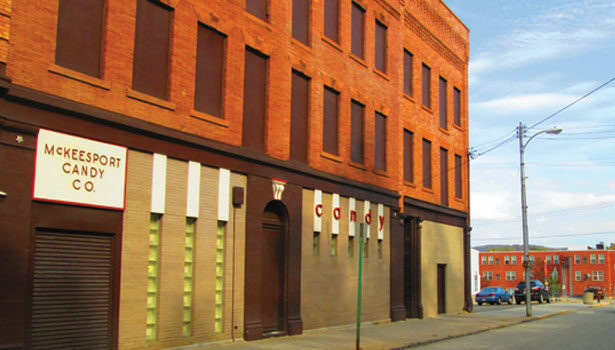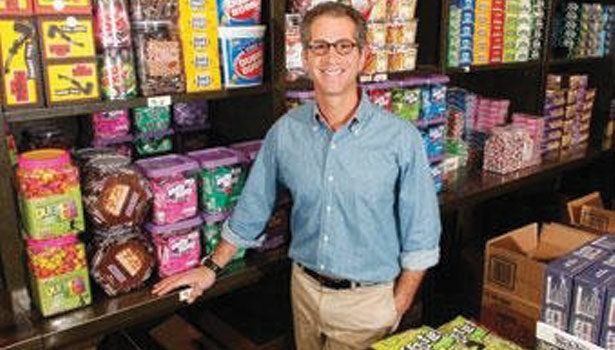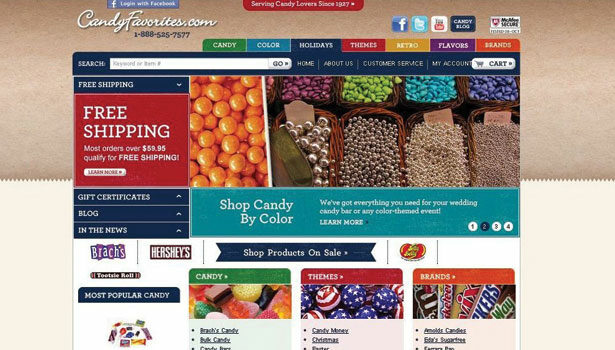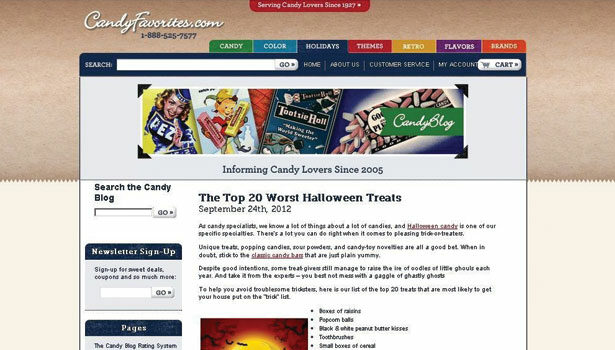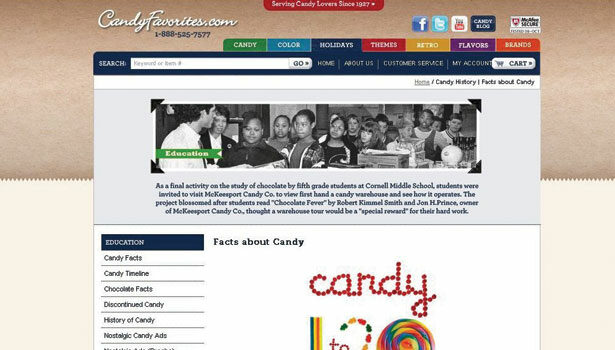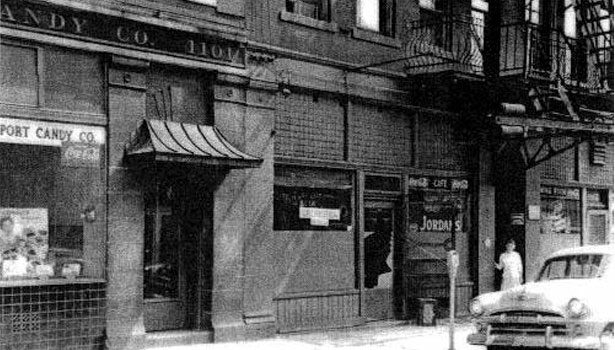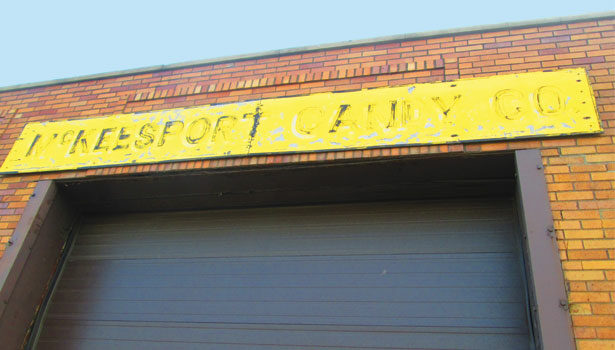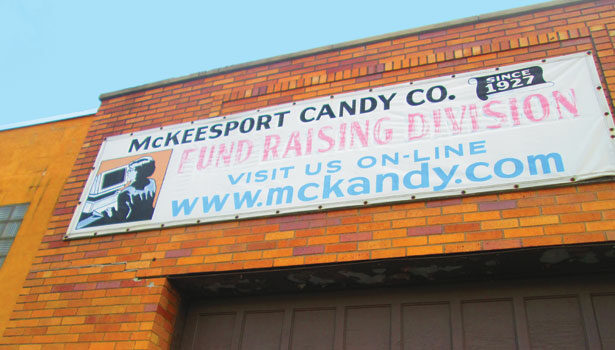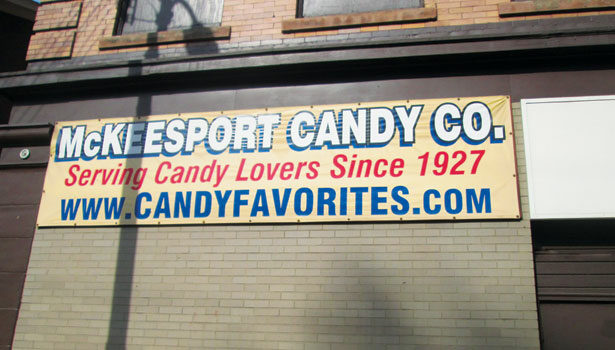The Prince family is really good at selling candy and that’s likely because they don’t much care how or where you buy it from them.
Since they started more than eight decades ago, they’ve run a wholesale business and multiple brick-and-mortar locations, repackaged bulk candy under their own label, sold fundraising candy, and operated an extremely successful online business.
Now best known for its website, CandyFavorites.com, the company was founded in 1927 in McKeesport, Pa. by Ernest Prince as a wholesale business and dubbed, appropriately, McKeesport Candy Co. In fact, after 85 years, the Prince family still runs the wholesale business and claims the title of oldest candy wholesaler in North America. But a lot has changed since 1927.
The business eventually was taken over by Ernest’s son, Gerald Prince, who ran it for about 30 years. Then, in 1999 Gerald’s son Jon H. Prince officially took it over. Today, he runs it with his partner Tom Griffin, but Gerald is still involved.
“I’ve been very blessed that our business has survived for a third generation,” Jon Prince says.
It wasn’t a direct path from wholesaler to online candy shop though.
First, the family dabbled into retail stores, starting with a candy shop in Pittsburgh called “The Candy Tree” in 1969. Then, they purchased “Candy Go Round” in 1973, from now defunct Candy Rama. And, in 1982, they opened two more retail stores, both called “Trifles.”
Although all the retail stores have since closed, the company still sells plenty of treats direct to consumers; it’s just that now they’re all sold online.
It was 1997 when the Princes launched their first website, McKandy.com, to promote their Fundraising & Concession Candy Division. Eventually, the scope of the site was broadened and the name was changed to CandyFavorites.com.
While they continue to run the wholesale side of the business and offer private-label bagging for corporations, department stores and supermarkets, it’s the website that really shines.
There, shoppers can browse through nearly 3,600 SKUs, ranging from well-known confections like Jelly Belly and M&M’S, to retro candies most people assume are no longer in production, like candy cigarettes and Valomilk Candy Cups.
All of the confections are stored in a huge temperature-controlled warehouse, which is actually two-and-a-half connected buildings.
“It’s approximately a city block. I like to say it’s the sweetest city block in McKeesport,” Prince says.
One reason for maintaining such a large facility is shipping times. Unlike some internet candy companies, Prince says every single confection available on CandyFavorites.com is in stock in their warehouse, which drastically cuts down on how long it takes to fill orders.
“If you order Tootsie Pop Minis right now, I could walk over and pull them off the shelf and put them in a box right now,” he explains.
The company is privately held, so Prince did not share any specific sales numbers, but he did say they fill hundreds of orders, seven days a week, while also maintaining a thriving wholesale company in Pennsylvania.
Another unusual thing about CandyFavorites.com is that there’s no minimum order requirement.
“We have one lady who buys one box of Dentyne a month,” he says. “We didn’t feel it was right to punish people who didn’t buy en masse. All visitors should be treated equally.”
One factor that makes it truly difficult to treat customers equally though is climate. As with any online candy store, Candy Favorites has to constantly try to figure out where and when they can ship chocolate.
“We built a mad scientist laboratory. Like, we’ll take a candy and put it in one of our cars and see how long it will last,” Prince explains. “We have a person during the summer months whose specific job is to work with customers. We’re not going to ship a product to a customer if we can’t guarantee it’s going to arrive in good condition.”
Of course, none of that would matter if the website still looked like it was launched in 1997. Recognizing the importance of keeping their portal to Internet sales fresh, the company has focused on keeping the website fresh and customer friendly. Most recently, it was redesigned in 2011, after an eight-month creative process.
“There are some people who build sites with one purpose and one purpose only — to make it show up on search engines,” Prince says. “We wanted a site that was fun to use, intuitive to use, educational... Those core principles outweighed making our site into what was best for SEO [Search Engine Optimization].”
So, as they were creating it, he kept giving the site the ultimate user test — trial by mom.
“I asked my mother, who is not very computer literate, to find something on our website, and she couldn’t,” he explains. They kept tweaking and tweaking it until finally, one day, she could find what she was looking for.
One of the ways they accomplished that was by sorting the candy so that people could search for their favorite treats by color, holiday, decade, theme, flavor and brand. For example, if you’re trying to find Tootsie Rolls, you’ll see them listed under: “Brown Candy,” “Before 1919 Retro Candy,” and “Tootsie Roll Industries.”
Prince knows that a great candy website doesn’t just deliver product write-ups though — even if they are easy to find.
That’s why the site also features historical information about candy, like a Retro Candy Timeline that details all the important events in candy history dating back to 1848 when, “John Curtis produces the first branded chewing gum, made from tree sap, called The State of Maine Spruce Gum.”
It includes about 100 entries ranging from: “1900: A very important year as Milton Hershey introduces a variation of what will eventually become the Hershey’s Milk Chocolate Bar” to “1990: Hershey sends 144,000 heat-resistant candy bars to soldiers in the Gulf War. The formula is identical to what they sent the soldiers in WWII.”
Of course, every entry that mentions a specific product also links back to the page where customers can buy the treat. There’s also a candy blog, candy facts, and nostalgic candy ads.
“Our site is as much a celebration of the American candy industry as it is a retail store,” Prince says. “From the start, we didn’t want a site that was purely about selling candy. We wanted a site that was as much an educational resource as it was a place for people to buy candy bars as well as a place that pays tribute to an industry that has been good to three generations of my family.”
You’ll also find a snarky Frequently Asked Questions section written by the company’s social media guru, Jessica Prokop.
Called “Candy Common Sense,” it’s where you’ll find questions like, “Your shipping is expensive and costs as much as the product that I ordered.” And answers that start, “Here’s the truth — it costs a lot to ship candy.”
Prince said the FAQ section was a response to the fact that they were getting about 500 e-mails a day, many of which posed the same questions. One day Prokop said, “Why don’t we address them?”
“I was a bit hesitant to put this page up, because I thought it was too direct,” Prince says. “But it’s been well received. People have written us letters [that say], ‘Thank you so much for taking the time to explain things to us.’”
Retro never goes out of style
Before anything gets shipped though, customers have to find what they’re looking for, and that is something Prince guarantees they’ll be able to do.
As an 80-year-old company, it’s almost poetic that one of Candy Favorites’ biggest draws is the retro candy section. Organized by decade, you can findPop Rocks from the 1970’s, Swedish Fish from the 1960’s, Anise Bears from the 1950s,Fun Dip from the 1940’s, Choward’s Violet Mints from the 1930’s, Chick-O-Sticks from the 1920’s, and even Cella’s Cherries from before 1919.
“We still like to believe that there’s a certain sanctity in old-school brands,” Prince says. “It’s just something that transcends the nutritional value of candy...There’s few other industries that have been around as long as the candy industry, and are as rooted in people’s psyches.”
In fact, a lady called Candy Favorites the other day to say thank you for sending a Baby Ruth bar to her. She hadn’t had once since she was 30 years old — she’s now 70.
“When a quarter actually meant something, you’d go to the candy store and you’d buy a pack of M&M’s. That experience is always going to be rooted in the back of your head when you go and buy candy today,” Prince says.
Other treats that do well with the online candy consumer include candy by color (popular with brides-to-be), seasonal products, Mallo Cups, and lollipops. Of course, even people buying treats on their computer love Snickers.
Fun Fact: Prince says despite his job, he’s never actually tried a Snickers bar himself. He plans to though, someday. He also plans to keep showing up for work for awhile.
“Even though several larger companies have shown interest in acquiring us, I plan to keep running the business as long as I love going to work every day.”
As he reflects on the history of the company, he turns to the Grateful Dead for words to explain it all.
“What a long strange trip it’s been,” he says. ‘If you asked my grandfather, could he envision where we are today, I don’t think he could. I think my father could envision it, but he couldn’t imagine it happening. Where do I see the future going for us? I don’t know. Hopefully in a positive direction.”
As long as they continue to, as the Prince family says, “deliver candy and sell service,” there’s little doubt that their future will be sweet indeed.
